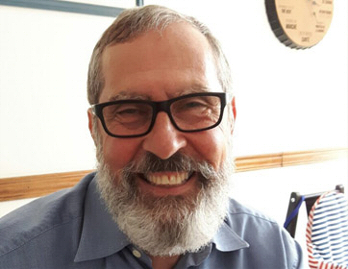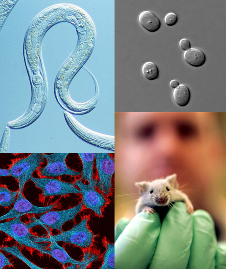Dr. siegfried hekimi

Siegfried Hekimi is from Geneva, Switzerland, and obtained his undergraduate and graduate degrees in Biology at the University of Geneva. After a successful career as a professional cyclist, he obtained his PhD with Prof. Michael O’Shea, and then moved to the famed Laboratory of Molecular Biology (LMB) of the Medical Research Council in Cambridge, UK, to collaborate with Dr J.G. White as a post-doctoral fellow of the Swiss National Science Fund. It is at the LMB where Hekimi developed his interest for using 'the worm' for translational studies in the biology of aging. It is also in Cambridge that he identified clk-1, one of the first mutants that helped to demonstrate that aging could be manipulated genetically, and which helped to demonstrate that inducing mild mitochondrial dysfunction and boost ROS signaling could slow down the aging process of animals. In 1992 he joined McGill University where he has been a full professor since 2004.
Visit Dr. Hekimi's Google Scholar Profile
Photo Album of Dr. Hekimi's Cycling Career
Research

We are using mutants of the microscopic nematode roundworm Caenorhabditis elegans, Saccharomyces cerevisiae, mice, and human cells to study aging, a crucial, profound, and poorly understood biological phenomenon. We hope to obtain insights that will also provide new ways for medical intervention on the aging process. We are particularly focusing on gene activities that affect mitochondrial function, and on mutants that enhance longevity. We are also interested in the biosynthesis and function of ubiquinone (UQ, Coenzyme Q, CoQ), the lipid-like the mitochondrial respiratory chain electron transporter. Here too we use mutants in both organisms to unravel the basic biochemical functions of ubiquinone and to develop drugs that can help alleviate the diseases linked to ubiquinone deficiency.
Publications

Wang Y, Lilienfeldt N, Hekimi S. (2024)
Understanding coenzyme Q. Physiological Reviews 104(4): 1533-1610.
Parmar G et al. (2024)
Accessory subunit NDUFB4 participates in mitochondrial complex I supercomplex formation. Journal of Biological Chemistry 300(2).
Rebelo A et al. (2023)
Biallelic variants in COQ7 cause distal hereditary motor neuropathy with upper motor neuron signs. Brain 146(10): 4191-4199.
Smith I et al. (2023)
Novel homozyhous variant in COQ7 in siblings with hereditary motor neuropathy. Neurology: Genetics 9(1): e200048.
Haynes CM, Hekimi S. (2022)
Mitochondrial dysfunction, aging, and the mitochondrial unfolded protein response in Caenorhabditis elegans. Genetics.
THE LAB
The laboratory is located in the Francesco Bellini Life Sciences Complex on William Osler Street in the west part of the McGill campus. It is near the metro station Peel Map. The Francesco Bellini Life Sciences Building accommodates scientists from biology, biochemistry and physiology.
CONTACT
Dr. Hekimi: siegfried.hekimi@mcgill.ca
Research Associates:
robyn.branicky@mcgill.ca (worms)
ying.wang10@mcgill.ca (mice)
Department of Biology, McGill University
Bellini Life Sciences Complex
3649 Promenade Sir William Osler
Montreal, Quebec H3G 0B1